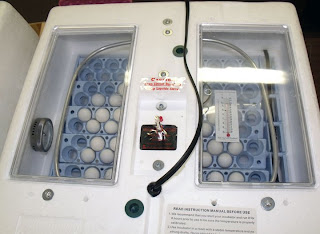

- BUYING AN INCUBATOR FOR EGGS HOW TO
- BUYING AN INCUBATOR FOR EGGS PRO
- BUYING AN INCUBATOR FOR EGGS WINDOWS

If after 10 days you see no growth in an egg, it probably isn’t fertile. Step 7: Remove dead or spoilt eggsĬandle the eggs after one week and record any development. Always wash your hands before coming into contact with the eggs and be sure to handle them gently and with care. Turn them in an odd number of times each day, to be sure they don’t rest on the same side every night. Be sure that they’re all always date side up or date side down. Turn the hatching peacock eggs 180 degrees at least three times, daily. By doing so, you will avoid the yolk sticking to the shell. In order to ensure that the eggs develop properly, it is important to maintain a steady temperature and to regularly turn them. Step 6: Maintain a steady temperature and turn the eggs regularly This allows the developing embryo inside the egg to have room to breathe and prevents the yolk from sticking to the shell. Always set eggs with the small ends pointing downward and the larger end facing upward. Do not adjust the temperature for the first 48 hours after placing the eggs. The temperature will naturally go down in the incubator for the first few hours. Place the fertile peacock eggs into the incubator. Step 5: Position the eggs in the incubator Remember to also add water to the incubator when you first start it up. The incubator should be placed indoors in a room with good ventilation to ensure the eggs stay safe and healthy. You can test your incubator by running it for 24 hours without eggs to see if the temperature and humidity levels remain stable. The most important part of using an egg incubator is making sure the temperature and humidity stay consistent.

Your incubator probably came with a hole in it for oxygen make sure that the hole is not closed or covered up.
BUYING AN INCUBATOR FOR EGGS WINDOWS
Avoid placing the device near windows or next to refrigerators or heating vents or air conditioners, etc. The best spots are where there are no temperature changes. Once the incubator is clean, you can then find a good spot for it. You will want to clean your incubator thoroughly (very thoroughly) to ensure that any bacteria or contaminants are removed. Step 3: Clean the incubator and place it in the ideal spot Read this article to know which incubator suits your needs. Most experts prefer forced-air incubators. Still-air incubators are smaller and don’t have a fan, so they’re better for fewer eggs. Forced-air incubators are larger and have a fan, making them great for large numbers of eggs. You have two main types of incubators to choose from: forced-air and still-air. Select clean eggs without any cracks or holes. The best eggs for hatching are medium-sized avoid eggs that are too small or too large. The first step to incubating peacock eggs is to procure healthy, fertilized eggs. Step 1: Obtain or collect healthy fertilized peacock eggs Keep the gathered hatching peacock eggs at room temperature, before placing them in the incubator. Peacock hens begin laying eggs in April and will lay eggs every other day until a clutch of 7-10 eggs is achieved. The process of hatching peacock eggs is very similar to the one used for hatching chicken eggs.
BUYING AN INCUBATOR FOR EGGS HOW TO
Remember, as long as your incubator is thermostatically controlled and has the proper humidity, you’ll be all set!Īlso Read: How to Candle Chicken Eggs + Candling Chart How to Hatch Peacock Eggs with an Incubator If you prefer to build your own incubator, we have a great post here that covers all the different options.
BUYING AN INCUBATOR FOR EGGS PRO
The Manna Pro Egg Incubator is a great option, especially if you’re on a budget. If you want to successfully hatch peacock eggs, you’ll need an egg incubator. By having everything you need beforehand, you can be sure that the incubation process will go smoothly. This includes a functional incubator, fertile peacock eggs, a candler, a thermometer, and a hygrometer.


 0 kommentar(er)
0 kommentar(er)
